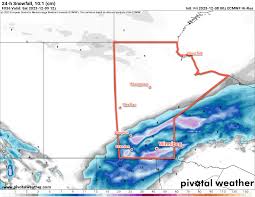Tragic Plane Crash in Greenland: Causes and Consequences

Introduction
The recent plane crash in Greenland has highlighted the inherent dangers of aviation in remote areas. As the Arctic region continues to grow in importance for both tourism and scientific research, the safety of air travel in such challenging environments becomes increasingly critical. On October 12, 2023, a small aircraft went down near Greenland’s eastern coast, resulting in a tragic loss of life and stirring discussions about the safety regulations that govern flights in this region.
Details of the Incident
According to reports from the Greenlandic authorities, the accident involved a chartered plane carrying eight individuals, including tourists and crew members. The plane departed from a coastal town and was en route to a popular tourist destination when it encountered severe weather conditions. Eyewitness accounts state that the aircraft struggled with strong winds and low visibility before plunging into the icy terrain.
The search and rescue operation faced numerous challenges due to the remote location and extreme weather conditions. After extensive efforts, recovery teams managed to locate the wreckage two days after the crash. Sadly, all eight individuals onboard were confirmed dead. An investigation has been launched by the Greenlandic Civil Aviation Authority to determine the exact cause of the crash.
Safety Concerns in Arctic Aviation
This incident raises significant safety concerns, particularly regarding aviation regulations in Arctic regions. The International Civil Aviation Organization (ICAO) emphasizes the need for rigorous safety standards and regular audits of operators who service remote areas. With growing traffic in northern airspace due to tourism and commercial flights, it is vital for authorities to assess current regulations and enhance emergency response capabilities.
Local communities have also expressed concerns regarding the adequacy of search and rescue operations in remote areas. The geographical challenges and unpredictable weather in Greenland pose ongoing risks, making effective response measures crucial for ensuring passenger safety.
Conclusion
The tragic plane crash in Greenland is a stark reminder of the risks associated with aviation in remote regions. As investigations continue, the findings are expected to inform future policy changes to improve flight safety and emergency response in the Arctic. Increased regulation and training for operators, as well as better resources for search and rescue missions, may help prevent such tragedies from occurring in the future. For travelers considering visiting these beautiful but challenging landscapes, being informed about the risks and safety measures is imperative. Understanding the complexities of Arctic aviation will contribute to safer journeys in these stunning yet remote environments.







